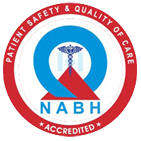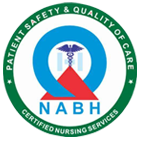The number of adolescents who participate in organized sports has increased over the last few decades. In particular, the number of young women participating in sports has grown very rapidly. With this increase has come a corresponding increase in sports injuries. Forty percent of all pediatric injuries are sports related. Estimates put this number at 4.4 million injuries per year. Overall, male and female injury rates are becoming equal.
Injuries related to sports participation fall into two types of trauma: micro (due to repetitive trauma) and macro (due to a single traumatic event). Often these injuries are trivialized and the young athlete is asked or encouraged to "toughen up and play through the pain." This approach is not in the young athlete's best interest for the following reasons:
· It often leads to delayed healing and return to sports
· It can turn an easily treatable injury into one that becomes difficult to treat, and
· In some cases, it can result in a prominent injury that precludes sports participation
The adolescent is still growing. The growth plates (physis) are cartilaginous (strong connective tissue) areas of the bones from which the bones elongate or enlarge. Repetitive stress or sudden large forces can cause injury to these areas. In the
adolescent knee, such injuries include:
·
Fracture—Breaking of the growth plates. A
fracture through the growth plate can be a very serious injury that can stop the bone from growing properly. These fractures should be treated by an orthopedist, as some will require surgery.
·
Osgood-Schlatter's disease—Pain at the knob just below the knee cap (tibia tubercle). Overuse injury may occur because of year-round sports participation. This type of injury responds to rest and activity modification. Adolescents will outgrow Osgood-Schlatter's.
·
Sindig-Larsen-Johansson disease—Pain at the lower pole of the knee cap (patella). Sindig-Larsen-Johansson disease is caused by overuse and is treated with rest. Adolescents will outgrow it.
·
Osteochondritis dissecans—Separation of a piece of bone from its bed in the knee joint. This injury is usually due to one major macro event, with repetitive macro trauma that prevents complete healing. This injury is potentially very serious. Treatment varies from rest to surgery.
·
Bipartite/multipartite patella—Results from failure of a bone growth center to fuse normally. Rest is the first line of treatment, but if pain persists, surgery may be required.
·
Anterior knee pain—Anterior knee pain, or patella femoral syndrome, is often passed off as growing pains. Causes of this pain include overuse, muscle imbalance, poor flexibility, poor alignment, or, more commonly, a combination of these. Anterior knee pain is one of the most difficult adolescent knee injuries to sort out and treat. Accurate diagnosis and treatment depends on finding a musculoskeletal specialist with a special interest and expertise in this difficult area.
·
Patellar instability—Patellar (kneecap) instability can range from partial dislocation (subluxation) to dislocation with fracture. Partial dislocation can often be treated conservatively. Dislocation with or without fracture is a much more serious injury and usually will require surgery.
·
Knee ligaments and the menisci (cartilage between the leg bones) have greater blood supply and are more elastic in adolescents than in adults. As adolescents near the end of bone growth, their injuries become more adult-like and the adolescents become more susceptible to meniscal and
anterior cruciate ligament (ACL) injuries.
·
Medial collateral ligament (MCL) injury—This injury results from a lateral blow to the knee. Pain is felt on inner side (medially) of the knee. MCL injuries respond well to protective bracing and conservative treatment.
·
Anterior cruciate ligament (ACL) injury—This injury is most commonly caused by a non – contact twisting or deceleration mechanism which results in excessive hyperextension or interval rotation forces on the anterior cruciate ligament. Non-contact injuries of the ACL are becoming more common than contact injuries. Adolescent females are at high risk. Combination injuries with MCL or menisci are common. Surgical reconstruction is needed if the adolescent wishes to continue participating in "stop-and-start" sports.
·
Meniscal injury—An injury to the meniscus, the crescent-shaped cartilage between the thigh bone (femur) and lower leg bone (tibia). These injuries usually result from twisting. Swelling, catching, and locking of the knee are common. Nearly all of these types of injuries will require
arthroscopic surgery.
Making the diagnosis
In most cases, the physician can make the diagnosis by taking the patient's medical history and performing a
physical exam. The adolescent's age, sex, and level of participation in sports are important. A description of how the injury occurred is valuable. The physician will want to know if there was a "pop," swelling, history of previous injury, family history of similar injury, locking or giving way of the knee, or other signs or symptoms. While special tests can be helpful, in certain circumstances an accurate diagnosis can be made 90 percent of the time by taking a good history and performing a systematic exam of the knee.
Conclusion
· Adolescent sports injuries continue to rise.
· Certain injuries tend to occur to certain age groups and sexes.
· In most cases, a good history and physical exam by an adolescent sports medicine expert will provide an accurate diagnosis.
· Knee swelling, pain, and loss of function are not normal.
· Remember, not all serious knee injuries result from major trauma.
· Injuries that appear minor can have serious consequences.
· Adolescents have a lot of enjoyable sporting years ahead of them. It would be a shame to see this enjoyment end too soon.
· When in doubt, seek expert medical advice. It's better to be safe than sorry.




